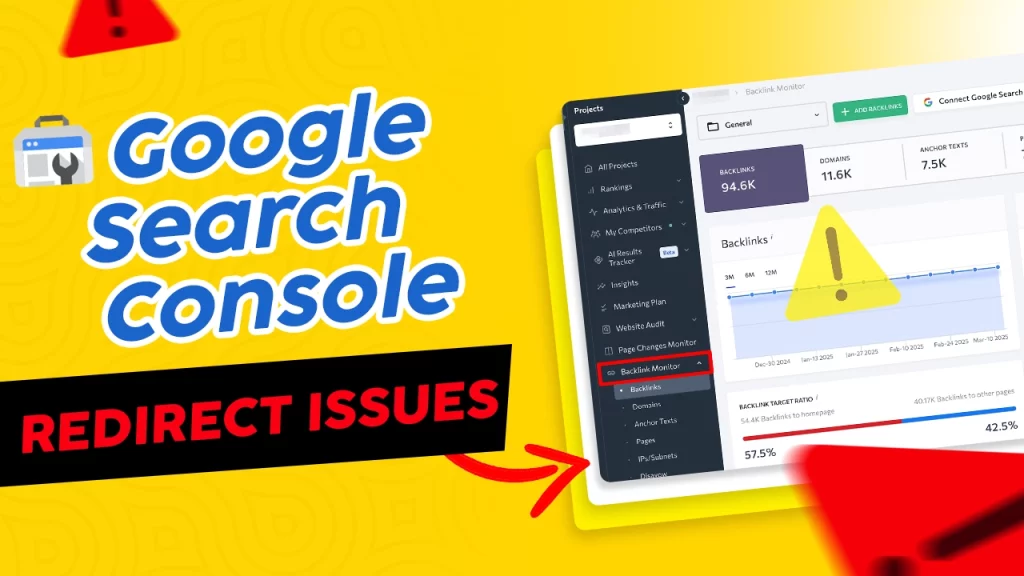SEO Content Briefs: A Guide to Success

Highlights:
- SEO content briefs guide writers with details on topics, target audiences, keywords, word counts, and SEO requirements.
- Case studies illustrate the positive impact of well-crafted briefs on rankings and engagement.
- Resources, primary and secondary keywords, and understanding search intent are crucial for effective content creation.
- Clear editorial direction, involving target audience, niche, and goals, is essential for a successful blog.
- Overcoming challenges such as unclear goals and unrealistic deadlines requires collaboration and realistic planning.
SEO content briefs are a critical tool for any business that wants to create effective content that ranks well in search engines. A well-written SEO content brief will provide your writers with all the information they need to create content that is both informative and engaging, and that is also optimized for search engines.
In this guide, we will discuss what SEO content briefs are, why they are important, and how to write one.
What is an SEO Content Brief?
An SEO content brief is a document that outlines the goals, objectives, and requirements for a piece of content. It is typically written by a content manager or strategist and is then shared with the writer who will be creating the content.
An SEO content brief should include the following information:
- Topic: What is the topic of the content?
- Target Audience: Who is the content intended for?
- Key Keywords: What keywords do you want the content to rank for?
- Word Count: How long should the content be?
- Call to Action: What do you want the reader to do after reading the content?
- SEO Requirements: Any specific SEO requirements for the content, such as internal linking, image alt text, or social media sharing information.
Why are SEO Content Briefs Important?
How to Write an SEO Content Brief
Writing an SEO content brief can seem daunting, but it doesn’t have to be. Here are a few tips to help you get started:
- Start with the Topic. What do you want the content to be about?
- Consider Your Target Audience. Who are you writing for?
- Do Your Keyword Research. What keywords do you want the content to rank for?
- Set a Word Count. How long should the content be?
- Define Your Call to Action. What do you want the reader to do after reading the content?
- Consider Any Specific SEO Requirements. Do you need to include internal linking, image alt text, or social media sharing information?
Once you have answered these questions, you can start to write your SEO content brief. Be sure to include all the relevant information so that your writer can create the best possible content.
Crafting Effective SEO Content Briefs for Various Purposes
There are many different types of SEO content briefs, each with its specific purpose. Imagine you manage marketing for a widget company.
- Blog Post Briefs: These briefs should include the topic of the blog post, the target audience, the key keywords, the word count, the call to action, and any specific SEO requirements.
- Landing Page Briefs: These briefs should include the purpose of the landing page, the target audience, the key keywords, the call to action, and any specific SEO requirements.
- Product Page Briefs: These briefs should include the product being sold, the target audience, the key keywords, the call to action, and any specific SEO requirements.
Case Study of a Successful SEO Content Brief
For example, you are a marketing manager for a company that sells widgets. You want to create a blog post that will help you rank for the keyword “how to use widgets.” You write an SEO content brief that includes the following information:
- Topic: How to use widgets
- Target Audience: People who are interested in learning how to use widgets
- Key Keywords: how to use widgets
- Word Count: 1,000 words
- Call to Action: Sign up for our free newsletter
- SEO Requirements: Include internal linking, image alt text, and social media sharing information
The blog post is well-written, informative, and engaging. It also includes the key keywords that you want it to rank for.
As a result of this well-written SEO content brief, the blog post ranks well in search results for the keyword “how to use widgets.” This leads to more website traffic and leads for your company.
Resources for Writing SEO Content Briefs
There are many resources available to help you write effective SEO content briefs. Here are a few suggestions:
- Articles and Blog Posts: Many articles and blog posts provide tips for writing SEO content briefs. You can find these articles by searching online or by subscribing to industry publications.
- Tools: Several AI content writing tools can help you generate or manage SEO content briefs. These tools can help automate tasks such as keyword research and content analysis.
Primary Keywords: The Guiding Light
Imagine your SEO content brief as a lighthouse. The primary keyword is the powerful beam that shines out, attracting your target audience and guiding them towards your content. It’s the core topic, the single most important phrase you want your content to rank for in search engines.
How to Identify Your Primary Keyword:
- Consider Your Target Audience: What are they searching for related to your topic? Use keyword research tools to understand their search intent.
- Focus on High-Volume, Relevant Keywords: Choose a keyword that has enough search traffic to be worthwhile but isn’t overly competitive.
- Keep It Specific: Don’t aim for broad terms like “cooking.” Refine your keyword to something more specific like “healthy vegan stir-fry recipes.”
Secondary Keywords: The Supporting Cast
While the primary keyword is the star, secondary keywords play crucial supporting roles. They act like smaller, surrounding beams that enhance the visibility and reach of your content. Think of them as:
- Related Topics and Sub-Themes: These expand on the primary keyword, providing additional depth and context. For example, "stir-fry vegetables," "low-calorie sauces," or "easy weeknight meals" could be secondary keywords for your vegan stir-fry recipe.
- Long-Tail Keywords: These are more specific phrases that users might search for to refine their query. For example, "quick vegan stir-fry with tofu and broccoli" could be a long-tail keyword related to your main topic.
- Synonyms and Variations: Consider different ways people might express the same concept. For instance, "vegan stir-fry alternatives" or "plant-based stir-fry recipes" could be secondary keywords.
The Power of Primary and Secondary Keywords
Combining primary and secondary keywords effectively offers several advantages:
- Improved Search Engine Ranking: By targeting a relevant primary keyword and incorporating well-chosen secondary keywords, you increase your content's visibility in search results.
- Enhanced User Experience: Secondary keywords provide additional context and cater to diverse user intent within your topic, leading to a more satisfying experience for your audience.
- Broader Reach: Secondary keywords tap into related searches, attracting a wider audience who might not have found your content solely through the primary keyword.
Remember:
- Don’t stuff your content with keywords. Use them naturally and strategically.
- Prioritize your primary keyword, but don’t neglect the potential of secondary keywords.
- Continuously monitor and adjust your keyword strategy based on search trends and user behavior.
- By incorporating these insights into your SEO content briefs, you’ll equip your writers with the tools to craft content that shines brightly in the search engine landscape. You can also consider using keyword research tools to uncover the terms your audience is actively searching for and stay ahead of competitors.
Search Intent: Understanding the Why Behind the Query
Search intent, in the realm of SEO, goes beyond the mere words typed into a search engine. It delves into the underlying reason why someone is searching for something. It’s the motivation, the goal, the desire behind the query. Understanding search intent is crucial for crafting content that truly resonates with your target audience and drives results.
Four Main Types of Search Intent:
- 1. Informational: The user seeks knowledge, understanding, or answers to a specific question. Examples: "What is the best treatment for acne?", "How to cook a perfect steak?", "Difference between SEO and SEM?".
- 2. Navigational: The user knows what they want and is looking for a specific website or page. Examples: "Youtube.com", "Amazon login", and "Facebook profile of John Smith".
- 3. Transactional: The user is ready to buy or complete a specific action. Examples: "Buy iPhone 14 Pro", "Book a hotel in Paris", and "Download free ebook on marketing".
- 4. Commercial investigation: The user is researching a product or service before making a purchase decision. Examples: "Best laptops for students", "Reviews of electric cars", and "Compare credit card options".
Why is Understanding Search Intent Important?
- Relevance: When you know the intent behind a query, you can create content that directly addresses the user's needs. This leads to higher engagement and better conversion rates.
- Keyword Targeting: Identifying relevant keywords with the right intent ensures your content reaches the right audience. Targeting informational keywords won't attract users looking to buy, and vice versa.
- Content Formatting: Different intents call for different formats. Informational queries may be best served by articles or explainer videos, while transactional intent might respond better to product pages or landing pages.
- SEO Optimization: Search engines prioritize content that satisfies the user's intent. Understanding intent helps you optimize your content for the right search signals.
How to Identify Search Intent:
- Analyze the Keywords: Look for clues within the query itself. Informational keywords often include “how to”, “what is”, “best”, etc. Transactional keywords might have “buy”, “order”, “discount”, etc.
- Consider the Context: Where is the user searching from? What device are they using? This can provide insights into their intent. For example, someone searching on their phone while in a store is likely in a transactional mindset.
- Analyze Search Results: See what other content ranks high for the same query. This gives you an idea of the type of content search engines deem relevant for that intent.
By understanding and addressing search intent in your SEO content briefs, you can create content that truly connects with your audience and achieves your marketing goals.
To further refine your strategy, explore different keyword research methods that align with search intent and content goals.
Editorial Direction for a Busy Blog
A clear editorial direction is essential for a busy blog. It helps you stay focused, consistent, and productive.
Key Elements of Editorial Direction:
- Target Audience: Who are you writing for? What are their interests, needs, and pain points?
- Niche: What makes your blog unique? What specific area of expertise or passion do you bring to the table?
- Goals: What do you want to achieve with your blog? Do you want to increase traffic, build brand awareness, or generate leads?
Once you have a clear understanding of these elements, you can develop an editorial direction that will help you achieve your goals.
Additional Tips for Busy Bloggers:
- Repurpose and Repackage Content: Turn one blog post into multiple formats, like infographics, videos, or social media snippets.
- Schedule Your Writing Time: Block out dedicated time in your schedule for writing, even if it's just for a short period each day.
- Utilize Tools and Resources: Take advantage of tools like grammar checkers, scheduling platforms, and social media management apps to save time and stay organized.
- Build a Community: Interact with your readers in the comments, on social media, and through email. This will help you stay connected and inspired.
By following these tips, you can create a successful blog that resonates with your audience, even when you’re busy.
How to Implement Editorial Direction
Once you have a clear understanding of your editorial direction, it’s time to start implementing it. Here are a few tips:
- Create a Content Calendar: This will help you stay organized and on track.
- Use a project management tool: This can help you track your progress and collaborate with others.
- Set Deadlines for Yourself: This will help you stay motivated and productive
It’s also important to be flexible and adaptable. As your blog grows and your audience changes, you may need to adjust your editorial direction accordingly.
By following these tips, you can implement your editorial direction and create a successful blog that resonates with your audience.
Common SEO Content Brief Challenges and How to Overcome Them
Creating effective SEO content briefs is crucial for driving organic traffic and online visibility. But even the best-laid plans can encounter hurdles. Let’s explore some common challenges and conquer them!
Challenge 1: Lack of Clarity or Direction
- Symptoms: Vague goals, unclear target audience, inconsistent brand voice.
- Solution: Collaborate with stakeholders to define goals, identify the target audience, and establish a consistent brand voice.
- Tip: Use templates or frameworks to structure your briefs and ensure all essential elements are covered.
Challenge 2: Unrealistic Deadlines or Expectations
- Symptoms: Rushed writing, insufficient research, low-quality content.
- Solution: Allocate realistic timeframes based on content complexity and research needs. Set achievable goals aligned with available resources.
- Tip: Prioritize content based on potential impact and align deadlines with team capacity.
Challenge 3: Inadequate Keyword Research and Targeting
- Symptoms: Content irrelevant to user intent, poor ranking, low organic traffic.
- Solution: Conduct thorough keyword research using a variety of tools, understand the user intent behind each keyword, and target a mix of primary and secondary keywords.
- Tip: Leverage keyword research tools like Google Keyword Planner, Ahrefs, or SEMrush to identify relevant and high-volume keywords.
Challenge 4: Lack of Technical SEO Understanding
- Symptoms: Content not optimized for search engines, slow loading times, mobile-friendliness issues.
- Solution: Partner with SEO specialists or provide basic guidelines on meta descriptions, title tags, image optimization, and internal linking.
- Tip: Utilize SEO plugins or website analysis tools to identify technical issues and track progress.
Challenge 5: Difficulty Measuring Content Performance
- Symptoms: Unclear success metrics, lack of data tracking, inability to analyze results.
- Solution: Define specific KPIs aligned with your goals (e.g., organic traffic, conversions, keyword ranking), implement analytics tools like Google Search Console and Google Analytics, and regularly track progress.
- Tip: Use data insights to inform future content strategies and optimize existing content for better performance.
By addressing these common challenges, you can create effective SEO content briefs that drive impactful results and propel your website toward online success. Remember, clear communication, realistic expectations, data-driven decisions, and continuous learning are key to crafting winning SEO content briefs!
Additional Tips for Writing Effective SEO Content Briefs
- Be Clear and Concise. Your SEO content brief should be easy to understand and follow.
- Be Specific. The more specific you are about your goals and objectives, the better your writer will be able to create content that meets your needs.
- Be Realistic. Don’t expect your writer to create a masterpiece in a day. Give them enough time to do their research and create high-quality content.
Pro additional tip: You should also use AI content writing tools to assist in generating draft outlines, speeding up research, and enhancing consistency across your content.
Conclusion
SEO content briefs are a valuable tool for any business that wants to create effective content that ranks well in search engines. By following the tips in this guide, you can write SEO content briefs that will help you achieve your content marketing goals.
Author
-

We are a digital marketing agency with over 17 years of experience and a proven track record of helping businesses succeed. Our expertise spans businesses of all sizes, enabling them to grow their online presence and connect with new customers effectively. In addition to offering services like consulting, SEO, social media marketing, web design, and web development, we pride ourselves on conducting thorough research on top companies and various industries. We compile this research into actionable insights and share it with our readers, providing valuable information in one convenient place rather than requiring them to visit multiple websites. As a team of passionate and experienced digital marketers, we are committed to helping businesses thrive and empowering our readers with knowledge and strategies for success.
View all posts




